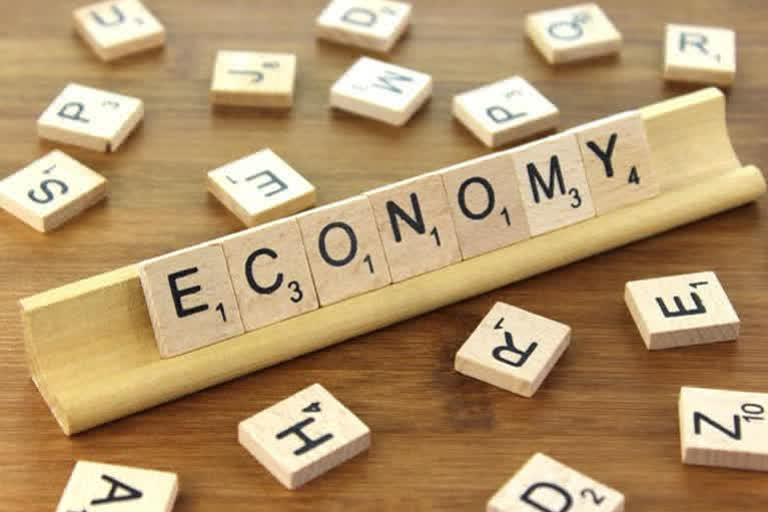New Delhi: There couldn’t have been a worse time for the Indian economy for a pandemic to blow in. While the economy was not exactly in the pink of health, COVID-19 has pushed it further down the financial abyss.
With the world economy bound to suffer a severe recession in 2020, for the Indian economy too, the writing is clear on the wall.
The International Monetary Fund (IMF) had recently downgraded its forecast for the Indian economy from 5.8 per cent in January this year to 1.9 per cent while the International Labour Organization (ILO) estimates that about 400 million people in India risk entering a state of abject poverty.
The need for India to chalk out ways to mitigate the financial crisis post-COVID-19 is therefore imperative, to say the least.
ETV Bharat spoke to two economists on the options that can possibly lead to a path of resilient recovery.
Aakash Jindal, an economist, has several suggestions, “There is a possibility that until December, India may face a recession. MOODY's says that the GDP would be only 0.2 per cent, Barclays says zero per cent. ILO report says 40 crore Indians maybe will be pushed deeper poverty.”
“Monetary Policy Committee of RBI must reduce the rate of interest by 1.5 per cent, the government should print and circulate more money which is termed as ‘helicopter money’'. By adopting these two ways, the money supply would increase in the hands of people which in turn would increase demand and consumption which is India’s strength. This would boost the economy, GDP and would generate employment to people”.
To his list of suggestions, Jindal also adds incentivizing the setting up of new industries while pointing out that the job scenario would be bleak for another three months but will improve after that.
On the fiscal front, Jindal says, “Some amendment should be considered in income tax policies, especially given the situation of COVID-19. The 80-C provision, which in simple terms means that the savings that people make for income tax relief, should be enhanced to Rs 4 lakh. With more investment, there would be more jobs and the GDP would grow.”
“There should be a massive reduction in income tax as well GST so that India can expand and expedite the economy. Income tax should be reduced by around 20 per cent and GST by one-third of what it is now”.
Underlining the strong possibility that India will suffer from recession post-COVID-19, Professor Shakti Kumar, who teaches economics at JNU, says, “Indian economy had already been slowing down in the last three years. Every quarter, India’s GDP has been declining. If COVID- 19 will last for another three months, the GDP of India will further decline.”
ALSO READ: There may be some truth to Lab Leak Theories
“Even during the slowdown, domestic and the foreign demand are already decreasing and post-COVID, it will only decline further. If the Indian government will look after the purchasing power of the rural areas or the poor people under the MNREGA, money will go to the MNREGA people. Another way is that the government should focus on the corporate sector so that money will come into the Indian economy, which in turn will increase the purchasing power on both sides.”
“There is the possibility that the Indian rupee will be weakened in comparison to dollars, which is not to be worried but it is important to focus on the increasing purchasing power of both foreign and domestic demand.”
Professor Kumar adds, “Purchasing power in the household sector should be increased which will further increase the demand and supply. Government expenditure should be increased, emphasis should be laid on the ‘Make in India’ initiative by offering foreign companies to invest in India which will boost production and generate employment opportunities.”
“Around 93 per cent of the total labourers are in the informal sector, they contribute almost 50 per cent to India’s economic growth. Their employment will suffer which shows that India will witness a recession if COVID-19 continues. If required, the government must print more currency to curb it.”
